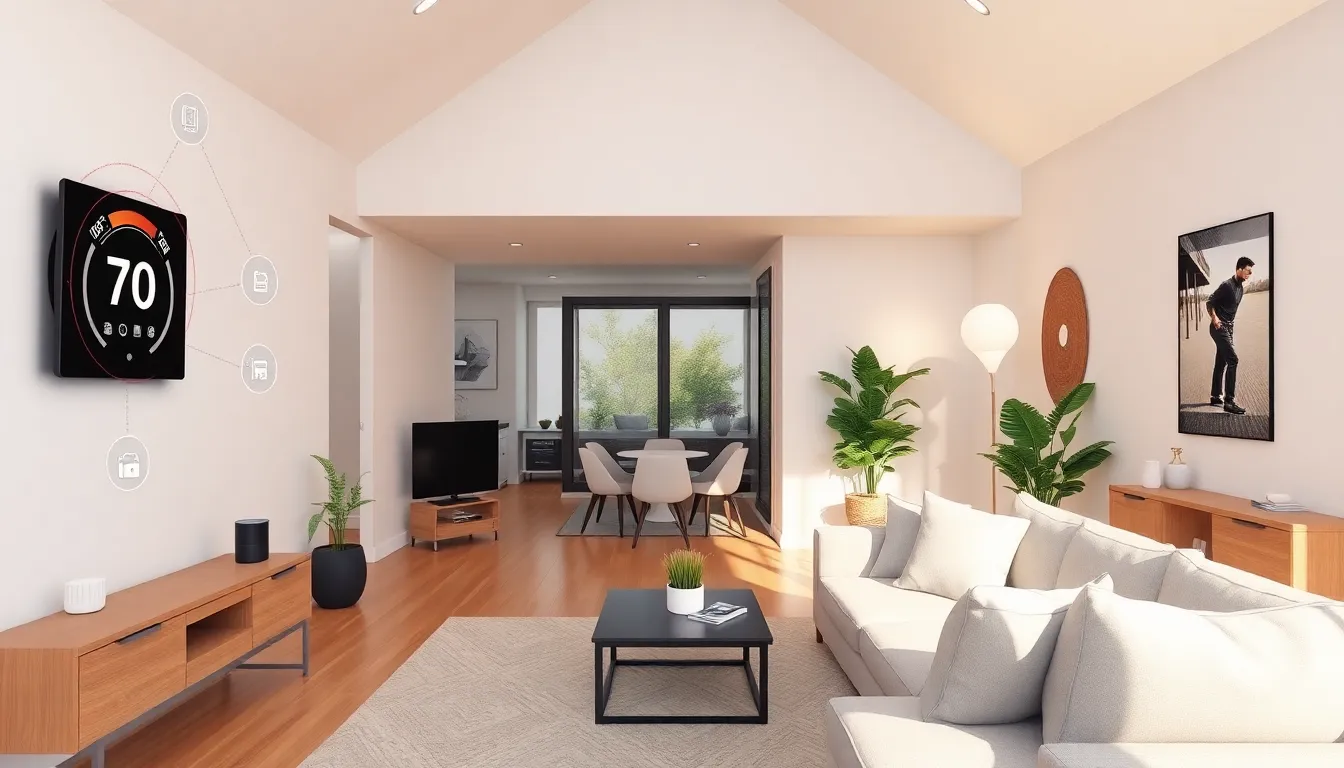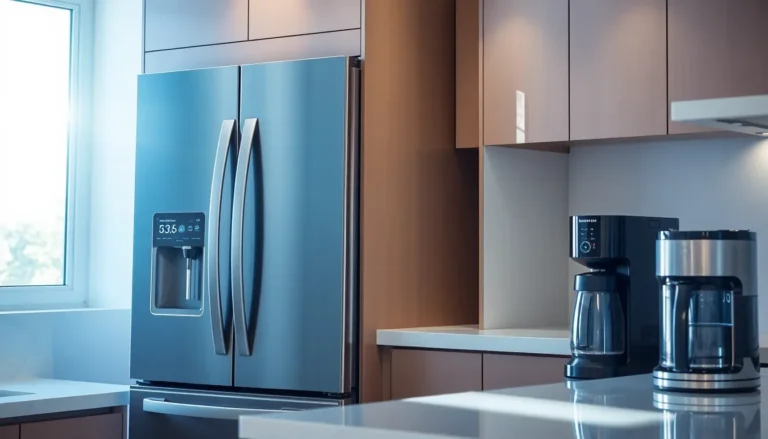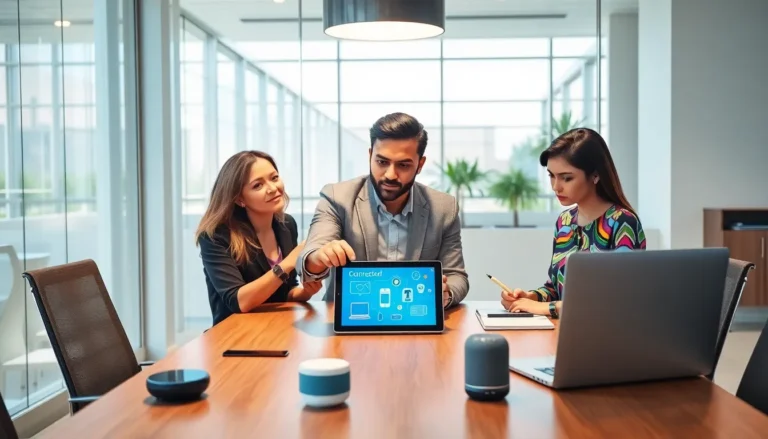Imagine a world where your coffee maker knows just how you like your brew and your fridge gently reminds you when that leftover pizza is on the verge of becoming a science experiment. Welcome to the age of the Artificial Intelligence of Things (AIoT), where everyday devices get a brain upgrade. It’s like giving your gadgets a shot of espresso—suddenly, they’re smarter, more intuitive, and ready to make your life a whole lot easier.
Table of Contents
ToggleUnderstanding Artificial Intelligence Of Things
Artificial Intelligence of Things (AIoT) integrates artificial intelligence with the Internet of Things, allowing devices to autonomously collect and analyze data. This combination enhances the smart capabilities of everyday devices, ultimately leading to improved efficiency and user experience.
Definition and Concepts
AIoT represents an evolving technological landscape where interconnected devices leverage AI to perform complex tasks. Many appliances and systems use machine learning algorithms to improve functionality. These innovations create more responsive interactions between users and devices. As a result, everyday tools like thermostats and security systems become smarter, learning user preferences and adapting accordingly. Understanding this interaction framework helps in recognizing the transformative potential of AIoT in various sectors.
Key Components
Several key components drive the effectiveness of AIoT systems. Sensors gather data from the environment, capturing real-time information about conditions and usage. Connectivity options, such as Wi-Fi and Bluetooth, enable devices to communicate seamlessly. Artificial intelligence processes the gathered data, discerning patterns and making decisions autonomously. Cloud computing supports the data storage and processing needs of connected devices. Together, these components form a cohesive system that enhances device intelligence and user engagement.
Applications of Artificial Intelligence Of Things

Artificial Intelligence of Things (AIoT) transforms various sectors by enhancing the functionality of interconnected devices. Several significant applications demonstrate its impactful integration.
Smart Homes
Smart homes benefit significantly from AIoT. Devices like thermostats, lighting systems, and security cameras operate autonomously, adjusting to users’ preferences. These systems use data from sensors to optimize energy usage, providing convenience and efficiency. Voice-activated assistants manage tasks, enabling hands-free operation. Homeowners can control all connected devices through a single interface, encouraging seamless interoperability. Security systems with real-time surveillance alerts improve safety, notifying users of unusual activity.
Healthcare Innovations
In healthcare, AIoT plays a vital role in patient monitoring and management. Wearable devices track vital signs, sending data to healthcare providers for analysis. Physicians can assess patients’ conditions remotely, allowing for timely interventions. AI algorithms analyze large datasets, identifying trends that predict health risks. Medical equipment equipped with IoT capabilities enhances operational efficiency in hospitals. Predictive maintenance ensures devices function smoothly, reducing downtime and improving patient outcomes.
Industrial Automation
Industrial settings leverage AIoT for enhanced operational efficiency. Smart factories employ connected machines to automate production processes, minimizing human error. Sensors monitor equipment status, predicting failures before they occur. Data-driven insights allow managers to optimize resource allocation, reducing costs. AI-driven robotics handle complex tasks, increasing productivity. Overall, AIoT transforms manufacturing environments, focusing on operational excellence and innovation.
Benefits of Integrating Artificial Intelligence With IoT
Integrating artificial intelligence with the Internet of Things offers significant advantages across various sectors. These benefits drive efficiency, enhance decision-making, and transform user experiences.
Enhanced Efficiency
Devices equipped with AI capabilities operate at optimal levels, automating processes that traditionally required manual input. Real-time data analysis improves operational performance, reducing downtime in industries like manufacturing. Resource management becomes seamless, leading to significant cost savings. AI-enabled IoT solutions adjust energy consumption based on real-time data, enhancing sustainability efforts. For instance, smart thermostats analyze weather patterns to optimize heating and cooling, resulting in lower utility bills. Overall, this combination fosters a more efficient and responsive environment.
Improved Decision Making
Data-driven insights from AIoT empower businesses to make informed decisions swiftly. Algorithms analyze vast amounts of data, identifying patterns that humans might overlook. Predictive analytics, for example, helps organizations forecast demand and optimize inventory management, minimizing waste. In healthcare, AIoT devices enable timely interventions by analyzing patients’ health data, supporting proactive care. Decision-makers benefit from visual dashboards that display key metrics in real time, clarifying complex scenarios. Enhanced decision-making capabilities lead to better outcomes across various fields.
Challenges Facing Artificial Intelligence Of Things
AIoT faces significant challenges that impact its development and adoption. Key among these are data privacy concerns and technical limitations, which pose obstacles to effective implementation.
Data Privacy Concerns
Data privacy emerges as a primary issue in AIoT. With numerous devices collecting user data, protecting personal information becomes vital. Many users worry about how their data is stored, shared, and used by manufacturers. Regulations, like the General Data Protection Regulation (GDPR), enforce stringent data handling requirements, pushing companies to adopt transparent practices. Organizations must implement robust security measures to safeguard sensitive information against breaches. Establishing trust between users and AIoT devices hinges on transparency and a commitment to protecting data privacy.
Technical Limitations
Technical limitations present another challenge for AIoT. Many devices lack sufficient processing power for complex AI algorithms, diminishing their efficiency. Connectivity issues can disrupt real-time data analysis, preventing devices from functioning optimally. Limited interoperability among different devices may hinder seamless communication, affecting overall user experience. It proves essential for manufacturers to prioritize enhancing hardware capabilities and ensuring compatibility between various systems. Addressing these technical gaps facilitates the full realization of AIoT’s potential and significantly enhances user engagement.
The Artificial Intelligence of Things is reshaping how people interact with technology in their daily lives. By integrating AI with IoT, devices are becoming smarter and more efficient, leading to enhanced user experiences. While the benefits are significant, challenges like data privacy and technical limitations must be addressed to unlock AIoT’s full potential.
As technology continues to evolve, the importance of robust security measures and improved interoperability will be crucial. Embracing these advancements will not only optimize functionality but also foster a more connected and intelligent environment. The future of AIoT holds great promise for transforming various sectors, making everyday tasks easier and more efficient.






